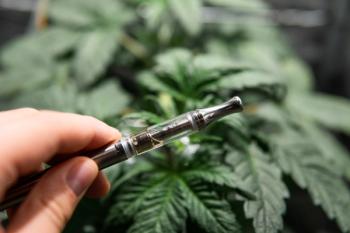
Cannabis Science and Technology
- June 2021
- Volume 4
- Issue 5
Harnessing the Power of Data in Extraction and Refinement of Cannabis, Part I

A look at how extraction data can be harnessed to better understand strengths and weaknesses within methods, equipment, employee performance, and source material.
Extraction and refinement of cannabis has a wide range of steps and variables. Strong record keeping and integrity at each stage of the process creates a wealth of data. This data can be harnessed to better understand strengths and weaknesses within methods, equipment, employee performance, and source material. With data, better decisions can be made to improve efficiency and open the door to increased profitability.
Processing cannabis has many critical steps along the way to producing target cannabis extracts and final products. Many production facilities operate with inherited procedures. However, as operations continue to scale up and the industry moves closer to federal legalization it is vital to take into consideration standardizing processes and continuous process improvement. Without analyzing metrics and data at each stage in the process, it is a shot in the dark as to where to tackle optimization. In this column, we discuss the steps during cannabis extraction to better understand where and how to implement better record keeping and data analysis practices in your facility.
In Figure 1, general steps of cannabis extraction and refinement are outlined in a process flow diagram. While each extraction and processing facility may use different techniques, generally these are the main steps in producing refined cannabis extract. Accompanied with the process flow diagram in Figure 1 are vital metrics that can and should be tracked at each stage of the process. Each of these metrics can impact the end result of processing by way of quality, yield, and ultimately the cost to produce.
Cannabis extraction methodology has been developed enough such that there are now industry standard parameters for a generic extraction. Parameters such as pressure, temperature, input weight, and extraction time are some metrics that will impact the end result of an extraction. Each of these metrics can be manipulated independently to create a different result, whether that be an increase in efficiency or quality of the extract.
Some data points reveal much more than others with respect to the end product and overall process efficiency. Whether input materials are cultivated within the organization or sourced from outside the organization, it is important to analyze them for concentration of target compounds. For example, upon intake the cannabinoid and terpene potency and profile can be tested with an in-house or third party analytical testing device. This data sets the stage for what can be expected throughout the processing steps.
Understanding and regularly assessing extraction data establishes baseline performance for a technician, equipment, or input source. This baseline performance creates data-supported metrics for a facility to target. One term that is often utilized in the cannabis industry is “yield.” The term yield is consistently used to qualify value or quality. Yield is defined as “to produce or provide,” especially within agricultural and manufacturing industries. How much product is this plant going to yield? How much weight is this extraction going to yield? Cultivators, within or outside an organization, will comment on extraction yields for specific chemovars or negotiate a price on a lot of materials. This term is too vague to make a solid business decision as one can ask:
- Why does this particular product yield well in extraction?
- Where is this data coming from?
- Is the yield defined as the bulk weight or the output of
target compounds?
In this industry, “yield” often means ‘how much extract was extracted from a set weight of biomass.’ See Formula 1 as an example.
Formula 1: Extract weight (g)/Input weight (g) x 100% = Yield (%) 450 g extract/4500 g of biomass = 10%
In Figure 2, Formula 1 was used to calculate the yield as represented in the chart to demonstrate yield by batch of extracted material. Green circles indicate two areas of interest. One circle highlighting a series of batches that appear to represent a “good” yield and a second circle indicating a series of batches that appear to represent a “bad” yield.
A question remains unanswered: how much of the target compounds were extracted? If the target is tetrahydrocannabinol (THC), then it is important to know how much THC was present in the starting materials and how much THC was in the final extract. If the targets are terpenes and terpenoids, it is essential to know the concentration in the starting and final materials. This focused parameter can be referred to as extraction efficiency. Formula 2 demonstrates how to calculate extraction efficiency based on the known concentration of target compounds.
Formula 2: (Extract weight (g) X Potency of target compound in final extract)/(Input weight (g) X Potency of target compound in input material) = Extraction Efficiency (%)
600 g extract X 70% THC)/(4500 g of biomass X 10% THC) = 93.3%
extraction efficiency
From this metric, it is known what percentage of the target compounds were extracted. In Figure 3, the same batches are shown as in Figure 2 however the extraction efficiency was measured instead of basic yield. The same two circles are shown hovering over the batches that appear to be a set of “good” and “bad” yields. After looking at the extraction efficiency, it is clear that the “good yield” batches could have produced even more extract and the “bad yield” batches produced at their peak efficiency.
With these metrics, production facilities can make more informed decisions around sourcing material, cost of operations and product, and extraction parameters to optimize extraction and production for targets. There is ample opportunity for more granular data analysis on cost to produce or process optimization.
Conclusions
Some operators are using physical log books to keep records of batch run metrics while others are relying on traceability software for minimum required record keeping. Without easy data tracking systems and data analysis reporting, operators are unable to foster a team culture with data integrity at its core. Data must be consistently and accurately tracked to generate meaningful information. Extraction and refinement technology has advanced and automation has been integrated into multiple phases of the process. Many operators believe the data that is housed on automated equipment is a wealth of information. However, there are often no processes in place to filter, organize, and utilize the data. This is useless. I am confident that solutions will surface as organizations continue to scale up and search for ways to optimize efficiency.
In the next parts of this series, we will review the post-processing and refinement steps of producing cannabis extracts and how data during the extraction and refinement phase can translate into higher profit margins.
About the Columnist
LO FRIESEN is the founder, CEO, and Chief Extractor of Heylo. With a background in chemistry and clinical research, Lo was inspired to explore cannabis as a medicine and to enter the emerging industry. She joined Eden Labs, a leading CO2 extraction equipment manufacturer to support and expand a Research and Development department. There she managed the development of their latest and greatest CO2 extraction system. In 2017, after working with Eden Labs and another cannabis processor, Lo launched Heylo with a mission to help people get more out of life with cannabis.
How to Cite this Article
L. Friesen, Cannabis Science and Technology 4(5), 14-16 (2021).
Articles in this issue
over 4 years ago
Dispelling Cannabis Analysis Myths, Part Iover 4 years ago
Hemp Regulations and the Restrictions on Innovationover 4 years ago
Is Carbon-Neutral Cannabis Possible?over 4 years ago
Analytical Techniques Used for Analysis of CannabinoidsNewsletter
Unlock the latest breakthroughs in cannabis science—subscribe now to get expert insights, research, and industry updates delivered to your inbox.


